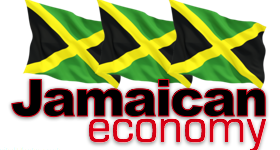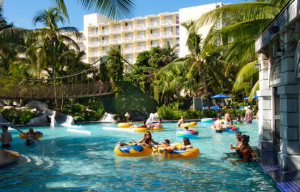Economic growth for Jamaica is expected to remain positive in 2020 following increases in 2019, even as the closure of Alpart acts as a drag on the economic growth rate in the first half of the year.
 Jamaica will see steady growth with improvements in several areas during the year, with increased output for manufacturing, tourism, finances and other service sectors such as BPO and entertainment. The continuation of major road construction projects and many new buildings going up in the country will also aid the continuation of economic growth during the year.
Jamaica will see steady growth with improvements in several areas during the year, with increased output for manufacturing, tourism, finances and other service sectors such as BPO and entertainment. The continuation of major road construction projects and many new buildings going up in the country will also aid the continuation of economic growth during the year.
Growth in stopover arrivals bounced to 7.6 percent in the December quarter up from a slightly slower summer months with gains of 4.5 percent, 2019 finished with an overall increase of 6.5 percent in stopover arrivals and bettered the 4.6 percent increase in 2018 over 2017. The increase in 2019 suggests a very strong demand for the Jamaican product. Increased demand for the product provides room for greater revenues per room as hotels do not have to do a deep discount of rates as they did in the early part of the last decade. The sector should continue to grow around 7 to 10 percent for the coming year and bring in addition inflows around US$400 million over 2020. It could do even more with the strong demand for rooms that could see hotels getting average rates that are higher than in 2019.
Concerns regarding the coronavirus are worth watching. If the spread in the west is more broad-based than it currently the case, it could negatively affect visitor arrival numbers to Jamaica.
 Data out of Statin indicates a 4.9 percent increased output in the manufacturing sector for the September quarter, helped by gains in PetroJam production. That is faster than the July quarter, with growth of 3.2 percent and the first quarter growth with negative 1.3 percent following a 2.4 percent increase in the December 2018 quarter. The trend is positive for the manufacturing sector and augurs well for a good increase in 2020. Continued growth in loan financing and increasing interest of companies seeking fresh long-term capital through the capital market are big positives for the business sector in 2020 and beyond. The Manufacturing sector’s use of borrowed funds, excluding cement, was consistent with 20 percent increased borrowing in 2019 and 2018.
Data out of Statin indicates a 4.9 percent increased output in the manufacturing sector for the September quarter, helped by gains in PetroJam production. That is faster than the July quarter, with growth of 3.2 percent and the first quarter growth with negative 1.3 percent following a 2.4 percent increase in the December 2018 quarter. The trend is positive for the manufacturing sector and augurs well for a good increase in 2020. Continued growth in loan financing and increasing interest of companies seeking fresh long-term capital through the capital market are big positives for the business sector in 2020 and beyond. The Manufacturing sector’s use of borrowed funds, excluding cement, was consistent with 20 percent increased borrowing in 2019 and 2018.
An important thrust in Jamaica’s economic development is the increasing number of companies raising long-term capital and listing on the Jamaica Stock Exchange. Increased long-term capital is an important move in getting greater productivity and production of goods and services out of local businesses that will help greater economic growth in the current year and beyond. Increased listings provide investors with viable opportunities to invest capital long term and be an integral part of the wealth creation in society. During 2019, there were several new listings on the Jamaica Stock Exchange. The exchange is forecasting 20 new listings in 2020 based on information provided by stockbrokers. The country will see the majority of companies seeking to list, raising fresh capital for business upgrading and expansion.
 Growth in the construction sector will pick up, with the start of the Kingston to Port Antonio road construction and demand continues in the BPO sector that will stimulate the need for more space while adding to employment. Data out of the Bank of Jamaica shows a sharp rise in lending to the sector with an increase of 37 percent over the amount lent in 2018 and well ahead of the 27 increase in 2018 over 2017. The increase in 2019 suggests a further rise in growth in the sector, which should continue into 2020.
Growth in the construction sector will pick up, with the start of the Kingston to Port Antonio road construction and demand continues in the BPO sector that will stimulate the need for more space while adding to employment. Data out of the Bank of Jamaica shows a sharp rise in lending to the sector with an increase of 37 percent over the amount lent in 2018 and well ahead of the 27 increase in 2018 over 2017. The increase in 2019 suggests a further rise in growth in the sector, which should continue into 2020.
The new Old Harbor power plant commenced operation on December 17 and uses natural gas that is much more efficient than the oil-powered plant that was 50 years old and was highly inefficient. The South Jamaica Power Centre plant will provide a more reliable and efficient source of electricity and will result in fewer power disruptions and lower electricity cost as the new plant will use less fuel, fewer workers and requires lower maintenance than the old one, that will be closed in early 2020. With capital expenditure of US$300 million, some of the lower operating costs will be eaten up by interest and depreciation costs. JPS quarterly financial gave a glimpse of what to expect from the switch over with a 10 percent drop in fuel cost for the quarter even as the official switch over took place in mid-December.
 The Foreign exchange market went through a number of changes as the central bank reduced the compulsory take from the market from 25 percent down to 20 percent for dealers and 15 percent for Cambios. In effect, the central bank bought no funds from the market through its weekly intervention tool and had no scheduled sale to the market. About four bouts of strong demand resulted in BOJ intervening by selling funds to the market. Notwithstanding, the interventions, the central bank ended the year with the NIR rising from US$3.005 billion at the end of December 2018 to US$3,16 billion after the NIR sank to US$2.95 billion in July.
The Foreign exchange market went through a number of changes as the central bank reduced the compulsory take from the market from 25 percent down to 20 percent for dealers and 15 percent for Cambios. In effect, the central bank bought no funds from the market through its weekly intervention tool and had no scheduled sale to the market. About four bouts of strong demand resulted in BOJ intervening by selling funds to the market. Notwithstanding, the interventions, the central bank ended the year with the NIR rising from US$3.005 billion at the end of December 2018 to US$3,16 billion after the NIR sank to US$2.95 billion in July.
Over the course of 2019, the exchange rate moved from $127.72 to US$1 at the end of 2018 to end 2019 at J$132.58 to US$1, after it reached its lowest level of J$141.89 to the US dollar on November. The NIR movement for 2019 suggests that the market is in a fairly balanced position. The country has periods when demand and supplies are higher than at other times and the two may not coincide thus creating some disquiet. There are other times when capital flows can impact the market positively or negatively. Unexpected capital flows can create a serious temporary imbalance in the system and may warrant BOJ’s intervention as occurred on a number of occasions over the last twelve months.

Growth in tourism expected in 2020
Money Market rates have been down and “This decline was also related to the increased supply of liquid assets during the quarter, given the maturity of GOJ bonds over the period.” Interest rates have been generally trending downwards from April of 2019, following sharp falls in 2018.
Spike in the exchange rate of the Jamaican dollar to the US dollar in the last quarter of the year put added pressure on prices and pushed inflation rate for the year to 6.2 percent, well above the 4.6 percent for the last 12 months to November 2019. Inflation for January dropped sharply by 1.1 percent as the FX rate impact was not present with the Jamaican dollar appreciated. Movements of the local currency accounted for a large part of increased inflation in 2019. The natural level of inflation is in the two to three percent range. The inflation rate should move back to more moderate levels in 2020 than it ended in 2019.
Government normal revenues up to November were running 7.5 percent ahead of the $373 billion intakes forecasted, with inflows at $400 billion to December 2019. This increase is after the government removed or reduced taxes at the start of the 2020 fiscal year with no new taxes levied. The preliminary guideline for the 2021 fiscal year, is for increased expenditure amounting to $18 billion in non-interest expenditure, but that is likely to be well below a probably $30 billion increase in normal revenues. With interest cost on government debt set to fall below that of the 2020 fiscal year, following the sharp fall in interest rates during 2019. The government will have room to increase spending in an election year. There is likely to be increased in capital spending, to be well ahead of the $75 billion projected for 2020, the Ministry of Finance instructions suggest for fiscal 2021.
Unemployment rates continue to fall, with the October 2019 unemployment rate down to 7.2 percent, the lowest on record. Labour Market conditions are projected to continue improving for the next eight quarters, the country’s central bank contends “the expected improvement reflects employment growth in manufacturing, finance & insurance, and business process outsourcing.” The Statistical Institute of Jamaica data shows the number of unemployed dropped to 96,700 persons in October with the number employed rising to 1.248 million persons. Based on the trend seen over the last three years, the unemployment rate should drop a possible one-percentage-point in 2020 compared to 2019 putting the unemployment around 6 to 6.5 percent. What is important about this improvement is the increase in the number of employed persons that will lead to increased demand in the economy, helping to stimulate increased growth levels.
Crime continues to be a major negative on the country acting as additional taxes on the wider economy, unfortunately, this major negative will continue to be present for some time to come.




